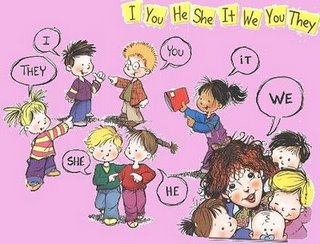
Hi everyone,
Let’s continue from my last blog about basic Thai pronouns:)
Thais will use much wider range of pronouns than those given in the last blog. Some of these are given below with an indication of whether they are specifically male (M) or female (F) pronouns and the context in which they are used; certain first person pronouns are normally ‘paired’ with a specific second person pronoun.
rao (เรา) M/F
1st person plural; also used as 1st person singular pronoun in informal speech.
nŭu (หนู) M/F
1st/2nd person pronoun used by children talking to adults, used by girls and young women to syperiors, for example, female students to teachers etc.
guu (กู) M/F
1st person pronoun used mainly by males as a male-bonding pronoun in informal situatins, also used to show anger.
guu (กู) is paired with mueng (มึง)
Mod says: I don’t like to hear females use this pronoun because it doesn’t sound like ladies.
I suggest that you shouldn’t use this pronoun with people that are not close enough because they will consider you very rude!
ter (เธอ) M/F
2nd/3rd person, singular and plural.
As a 2nd person pronoun it is paired with chán (ฉัน) F, or pǒm (ผม) M
As a 3rd person pronoun it usually refers to female.
kea (แก) M/F
2nd person intimate pronoun among members of the same sex. It is paired with chán (ฉัน) F.
man (มัน)
It regarded as unrefined and often avoided in polite, formal speech and writing; used widely in informal situations – including to refer to people, either derogatively or familiarly.
Mod says: I suggest you not to use this pronoun with anyone but your close friends and animals.
If you would like to learn more Thai please contact Mod at adjima_t@hotmail.com
Kop-Kun ka
Mod
Sa wat dii Krap 😀 I have also seen “puag-khao” used for “they/them” and “tarn” for “you” towards seniors, is this true?
Khaawp khun for all the lovely lessons :DDD